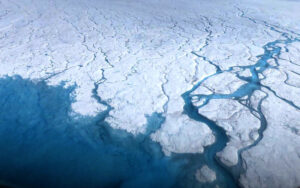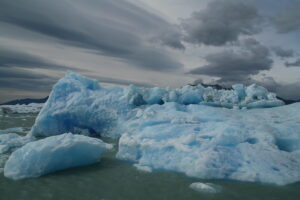The polar bears are in danger. This has been a narrative for quite some time. Their homes are diminishing daily. How and why is this happening? What evidence is there to show said degradation? How can we reverse these trends? What is the point of even analyzing the glaciers? These are all questions I hope to provide answers to throughout this article. In this article, I will touch on this topic as well as LiDar and how it is utilized within our understanding and analysis of glaciers.
We must first understand the meaning of the cryosphere before we continue. The cryosphere refers to the frozen water part of the Earth system. Some of this consists of ice found in water. This also includes frozen parts of the ocean such as water surrounding Antarctica and the Arctic. There are various places on earth that are so cold that water is frozen solid. There are various glaciers within the cryosphere that have different physical forms. A cirque glacier is formed in a bowl-shaped depression on the side of or near mountains. Snow and ice accumulation in corries often occurs as the result of avalanches from higher surrounding slopes. An arête refers to a sharp, narrow ridge formed as a result of glacial erosion from both sides. Horns refer to peaks or pinnacles thinned and eroded by three or more glacial cirques. Glaciers are typically moving. They tend to leave behind anything they pick up along the way, and sometimes this includes huge rocks. Glacial erratics are rocks that have been moved far away from their source before melting out from underneath a glacier. Glaciers and their movement are essential to the study of glacial shrinkage.
With glacial shrinkage and degradation we must have a background on why glaciers are important to our Earth. If the Greenland glaciers melted in full, it is estimated that sea levels would rise about 6 meters. If the Antarctic glaciers were to melt, sea levels would rise about 60 meters. The glaciers influence weather and climate directly on planet Earth. Large and high-altitude plateaus on ice caps alter storm tracks. They also create downslope winds that are usually close to the ice surface. Within the layers of ice blanketing within our glaciers lies a vast amount of data on Earth’s climate history.
So what does LiDar do for us when we are studying glacial shrinkage? Glacial shrinkage is in direct relation with glacial surface movement. It is important to know and understand shrinkage. Using light detection and LiDar, researchers have the ability to collect surveys over glaciers within different areas and regions. This also is done in combination with particle image velocimetry. Particle Image Velocimetry (PIV) is a non-intrusive laser optical measurement technique for research and diagnostics into flow, turbulence, microfluidics, spray atomization and combustion processes. With 3D data and flow data, we can get a picture of how a glacier will change its size as a function based on time and movement.
There are various publicly available DEMs that are useful for glaciological and geological research. This can be used for studies of ice-volume change, estimation of bias in mass-balance measurements, studies of jökulhlaups and subglacial lakes formed through geothermal land areas, and for mapping of crevasses. Jökulhlaups (an Icelandic word pronounced yo-KOOL-lahp) are glacial outburst floods. They occur when a lake fed by glacial meltwater breaches its dam and drains catastrophically. LiDar mapping includes a 500-1000 m wide ice-free buffer zone around ice margins. This contains various features which are studied thoroughly through DEMs.
Overall there is a lot to learn when it comes to how we can change our planet for the better. LiDar allows the first step of exploration and visualization of the problems were are facing with our glaciers. This allows us to make progress towards fixing the issue, but now what do we do?
Discuss this article and other 3D printing topics at 3DPrintBoard.com.
Subscribe to Our Email Newsletter
Stay up-to-date on all the latest news from the 3D printing industry and receive information and offers from third party vendors.
You May Also Like
Printing Money Episode 17: Recent 3D Printing Deals, with Alex Kingsbury
Printing Money is back with Episode 17! Our host, NewCap Partners‘ Danny Piper, is joined by Alex Kingsbury for this episode, so you can prepare yourself for smart coverage laced...
Insights from Cantor Fitzgerald on AM’s Q1 2024 Landscape
A recent survey by Cantor Fitzgerald sheds light on the persistent challenges within the additive manufacturing (AM) industry in the first quarter of 2024. Based on responses from 38 industry...
3D Printing Financials: Xometry’s Scaling up and Strong Start to 2024
Xometry (Nasdaq: XMTR) kicked off 2024 with strong results, boosting its marketplace and technology to new heights. Both revenue and gross margin soared, fueled by an expanding global network of...
3D Printing Financials: Desktop Metal Targets Recovery Amid Net Losses and Revenue Downturn
Despite facing a decline in revenue and the persistent challenges of a tight economic climate, Desktop Metal (NYSE: DM) is making strides toward operational efficiency. The first quarter of 2024...




































